Title search results
Showing 1 - 20 of 1644 items

Yucatan Through Her Eyes: Alice Dixon Le Plongeon, Writer and Expeditionary Photographer
By Lawrence Gustave Desmond. 2009
Alice Dixon (1851-1910) was born into a comfortable middle class life in London that she eagerly left behind to travel…
to Yucatán as the young bride of Maya archaeologist Augustus Le Plongeon. Working side by side as photographers and archaeologists, the Le Plongeons were the first to excavate and systematically photograph the Maya sites of Chichén Itzá and Uxmal. After spending eleven years in the field, she devoted the rest of her life to lecturing and published books and articles on a wide range of topics, including her exploration of Maya civilization, political activism and social justice, and epic poetry. Alice's papers became public in 1999 and included photographs, unpublished manuscripts, correspondence, and a handwritten diary; over two thousand of her prints and negatives survive today in public and private collections. Combined with Lawrence Desmond's biography of this remarkable woman's life, her diary offers readers a rare glimpse of life in the Yucatán peninsula during the final quarter of the nineteenth century, and an insider's view of fieldwork just prior to the emergence of Mesoamerican archaeology as a professional discipline.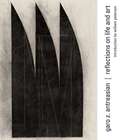
Garo Z. Antreasian: Reflections on Life and Art
By Garo Z. Antreasian. 2015
Garo Z. Antreasian (b. 1922) belongs to the great generation of innovators in mid-twentieth-century American art. While influenced by a…
variety of European artists in his early years, it was his involvement with Tamarind Lithography Workshop starting in 1960 that transformed his work. As Tamarind&’s founding technical director, he revolutionized the medium of lithography. He discovered how to manipulate the spontaneous possibilities of lithography in the manner of the Abstract Expressionist painters. In addition to reflecting on his work, he writes movingly about his Armenian heritage and its importance in his art, his teaching, and his love affair with all sorts of artistic media. Illustrating his drawings, paintings, and prints, this book reveals Antreasian as a major American artist.This book was made possible in part by generous contributions from the Frederick Hammersley Foundation and Gerald Peters Gallery.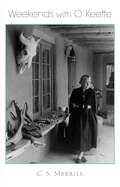
Weekends with O'Keeffe
By C. S. Merrill. 2010
Winner of the 2012 Zia Award from New Mexico Press WomenIn 1973 Georgia O'Keeffe employed C. S. Merrill to catalog…
her library for her estate. Merrill, a poet who was a graduate student at the University of New Mexico, was twenty-six years old and O'Keeffe was eighty-five, almost blind, but still painting. Over seven years, Merrill was called upon for secretarial assistance, cooking, and personal care for the artist. Merrill's journals reveal details of the daily life of a genius. The author describes how O'Keeffe stretched the canvas for her twenty-six-foot cloud painting and reports on O'Keeffe's favorite classical music and preferred performers. Merrill provided descriptions of nature when she and the artist went for walks; she read to O'Keeffe from her favorite books and helped keep her space in meticulous order.Throughout the book there are sketches of O'Keeffe's studio and an account of once assisting O'Keeffe at the easel. Jockeying for position among the helpers O'Keeffe relied upon was part of daily life at Abiquiu, where territorial chows guarded the property. Visitors came from far and wide, among them Eliot Porter and even Allen Ginsberg accompanied by Peter Orlovsky. All this is revealed in Merrill's straightforward and deeply respectful notes. Reading her book is like spending a weekend with O'Keeffe in the incomparable light and clear air of Northern New Mexico mountains and desert.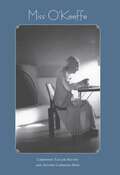
Miss O'Keeffe
By Alvaro Cardona-Hine, Christine Taylor Patten. 1992
In 1983, Christine Taylor Patten was hired as one of the people who took care of Georgia O&’Keeffe, then ninety-six.…
Also an artist, Patten served as nurse, cook, companion, and friend to the older woman. This intimate account of the year of Patten&’s employment offers a rare glimpse of O&’Keeffe&’s daily life when she could no longer see well enough to paint.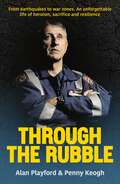
Through the Rubble: From Earthquakes to War Zones. A Story of Survival and Service
By Alan Playford, Penny Keogh. 2025
An unforgettable life of heroism, sacrifice, and resilience.In Through the Rubble, Alan Playford recounts his extraordinary life, marked by the…
dramatic moment he emerged from the wreckage of the Newcastle Workers Club during the 1989 earthquake. Alan became a national hero after rescuing Norm Duffy from beneath the rubble. In news coverage that circled the globe, Alan embodied the courage and determination of paramedics whose lives inspire admiration. For the paramedic known as 'Scoop,' this was simply another day on the job. To those who know him best, it was his destiny. Alan has been at the heart of defining moments in Australian history and global conflict, moments that forever changed the practice of paramedicine and saved millions of lives. This gripping memoir traces Alan&’s remarkable career, from his early struggles to modernise the ambulance service and launch helicopter rescue in Australia, to his life-saving work in global conflict zones. Alan served on the frontlines in Rwanda, East Timor, and the Solomon Islands, providing aid in dangerous environments and rescuing countless lives from the brink of death. A pioneer in the field, in 1989 Alan founded the Westpac helicopter service, which has since been integral in saving lives nationally. His bravery continued during domestic crises like the 2003 Canberra bushfires, where his calm under pressure earned him Australia&’s highest honours. Alan shares dramatic moments of heroism and the emotional toll of a career spent on the frontlines. He reveals the psychological burdens borne by those who serve, offering a deep look into the personal sacrifices made to protect others. This memoir is both a thrilling account of one man&’s life of service and a testament to the resilience of the human spirit in the face of unimaginable odds. Alan Playford&’s Through the Rubble offers an unforgettable portrait of a true hero—someone whose courage, compassion, and determination have shaped paramedicine and saved countless lives, both in Australia and around the world.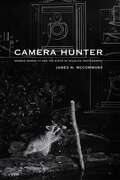
Camera Hunter: George Shiras III and the Birth of Wildlife Photography
By James H. McCommons. 2014
In 1906 George Shiras III (1859–1942) published a series of remarkable nighttime photographs in National Geographic. Taken with crude equipment,…
the black-and-white photographs featured leaping whitetail deer, a beaver gnawing on a tree, and a snowy owl perched along the shore of a lake in Michigan&’s Upper Peninsula. The pictures, stunning in detail and composition, celebrated American wildlife at a time when many species were going extinct because of habitat loss and unrestrained hunting. As a congressman and lawyer, Shiras joined forces with his friend Theodore Roosevelt and scientists in Washington, DC, who shaped the conservation movement during the Progressive Era. His legal and legislative efforts culminated with the passage of the Migratory Bird Treaty Act.Camera Hunter recounts Shiras&’s life and craft as he traveled to wild country in North America, refined his trail camera techniques, and advocated for the protection of wildlife. This biography serves as an important record of Shiras&’s accomplishments as a visual artist, wildlife conservationist, adventurer, and legislator.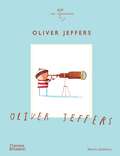
Oliver Jeffers (The Illustrators)
By Martin Salisbury. 2025
An overview of the life and work of the Northern Irish illustrator, bookmaker, painter, designer, activist, and global superstar in…
the world of visual communication. A phenomenon of twenty-first-century bookmaking, Oliver Jeffers's energy and curiosity has driven an extraordinary career that shows no sign of slowing. Only in his forties, he has published an array of hugely popular books, both as illustrator and author-illustrator, including How to Catch a Star and Begin Again. This overview of his life and work so far will chart his passion for the environment and his quest to understand humanity's major challenges, and the impact this has had on his creative and intellectual output. The list of Jeffers's accomplishments is long and glittering: he has been granted numerous one-man shows both in the United Kingdom and the United States and was appointed an MBE in 2022 for services to the arts. Most importantly, however, he has tirelessly pushed the boundaries of what a picturebook can be, both in terms of structure and content. His regular exploration of existential issues, both through illustration and other media, such as site-specific installation, has exerted a major influence on the practice of authorial picturebook-making. His works have been translated into multiple languages and into other media, including full-length animated films, such as Lost and Found.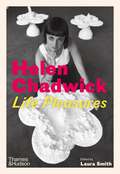
Helen Chadwick: Life Pleasures
By Laura Smith, Marina Warner, Maria Christoforidou, Philomena Epps, Katrin Bucher Trantow, Louisa Buck & David Notarius. 2024
The first ever critical biography of Helen Chadwick, who died tragically young but is now revered as a pioneering feminist…
artist. Helen Chadwick (1953–1996) embraced the sensuous aspects of the natural world, breaking taboos of the "traditional" or "beautiful." Her sculpture, performance, and photography is radical, provocative, and often steeped in humor, and employs unusual, sometimes grotesque materials—bodily fluids, meat, flowers, chocolate, and compost among them. She quickly became a leading figure among Britain’s postwar avant-garde, becoming one of the first women to be nominated for the Turner Prize. A dedicated teacher, she mentored the majority of the Young British Artists. She was also involved in the artistic community at Beck Road, Hackney, whose residents included Maureen Paley, Richard Deacon, and Genesis P-Orridge. Although Chadwick’s work was widely exhibited during her lifetime, attention to it declined following her unexpected death in 1996, and itis only relatively recently that its significance has been acknowledged afresh. Coinciding with a major touring retrospective, this publication spans the breadth of her practice, from her renowned MA degree show In the Kitchen (1977) through to her seminal Piss Flowers (1991–2). Merging art and life, with a focus on Chadwick’s interdisciplinary interests and engagement with education, music, and politics, as well as an in-depth study of her art and ideas, the book is a fitting tribute to her vital impact on social and cultural history.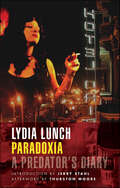
Paradoxia: A Predator's Diary
By Lydia Lunch. 2003
The unspeakable sexual confessions of underground legend Lydia Lunch.—Included in Flavorwire’s “An Essential Punk Literature Reading List"“Paradoxia is compelling, exhilarating, and…
infinitely readable.” —PaperParadoxia contains frank and often shocking confessions. Lydia Lunch relays in graphic detail a predator’s diary, revealing the true psychic repercussions of sexual misadventure. From New York to London to New Orleans, Paradoxia is an uncensored, novelized account of one woman’s assault on the male of the species.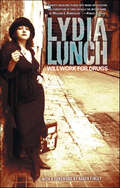
Will Work for Drugs
By Lydia Lunch. 2009
Lydia Lunch's second book will provoke rage, awe, and infectious desire.“Lunch has defined the underground music and art scene for…
over thirty years. Predictable only in her unpredictability, she has exploited every creative outlet at her disposal, from film to books, photography to poetry.” —SF WeeklyNo Wave founder Lydia Lunch’s first book, Paradoxia, proved that her presence is as strong on the page as it is on the stage. Her literary talents are even more impressive and varied in this iconoclastic and uncompromising collection. Whether crafting personal essays, short fiction, or interviews with fellow antiheroes Hubert Selby Jr. and Nick Tosches, Lunch dazzles in her ability to provoke discomfort and awe, terror and hope.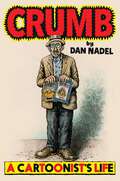
Crumb: A Cartoonist's Life
By Dan Nadel. 1972
&“A definitive and ideal biography—pound for pound, one of the sleekest and most judicious I&’ve ever read.&” —Dwight Garner, The…
New York Times A critical darling, Crumb is the first biography of Robert Crumb—one of the most profound and influential artists of the 20th century—whose frank, and meticulously rendered cartoons and comics inspired generations of readers and cartoonists, from Art Spiegelman to Alison Bechdel.Robert Crumb is often credited with single-handedly transforming the comics medium into a place for adult expression, in the process pioneering the underground comic book industry, and transforming the vernacular language of 20th-century America into an instantly recognizable and popular aesthetic. Now, for the first time, Dan Nadel, delivers a &“gripping and essential account&” (The Boston Globe) of how this complicated artist survived childhood abuse, fame in his twenties, more fame, and came out the other side intact. Braiding biography with &“cultural history and criticism...that honors the complexity of [its] subject, even, perhaps particularly, when it gets ugly&” (Los Angeles Times), Crumb is the story of a richly complex life at the forefront of both the underground and popular cultures of post-war America. Including forty-five stunning black-and-white images throughout and a sixteen-page color insert featuring images both iconic and obscure, Crumb spans the pressures of 1950s suburban America and Crumb&’s highly dysfunctional early family life; the history of comics and graphic satire; 20th-century popular music; the world of the counterculture; the birth of underground comic books in 1960s San Francisco with Crumb&’s Zap Comix; the economic challenges and dissolution of the hippie dream; and the path Robert Crumb blazed through it all. Written with Crumb&’s cooperation, this fascinating, rollicking book takes in seven decades of Crumb&’s iconic works, including Fritz the Cat, Weirdo, and his adaptation of The Book of Genesis and &“floats Crumb on the rapids of his times&” (Harper&’s Magazine), capturing, in the process, the essence of an extraordinary artist.
My name is Georgia: a portrait
By Jeanette Winter. 1998

Through Georgia's eyes
By Rachel Rodríguez. 2006

Living in the country growing weird: a deep rural adventure
By Dennis Parks. 2001
In 1972, Dennis Parks, a young potter with a promising academic career ahead of him, decided to move to Tuscarora,…
a near-abandoned mining town in remote northeastern Nevada. Parks and his wife were attracted to Tuscarora's isolation and beautiful setting, and they believed that it might be a healthy environment in which to raise their two small sons. This is Parks' account of his family's life in Tuscarora, a tiny settlement whose population even forty years later numbers fewer than twenty permanent residents. Parks created a pottery school that attracts students from around the world and developed for himself an international reputation as the creator of powerful, innovative works in clay. Meanwhile, he and his family had to master the skills required of those who choose to live in the back country--growing and hunting their own food, renovating or building from scratch the structures they needed for residences or studios, resolving conflicts with neighbors, inventing their own amusements. The transformation from middle-class urbanity to small-town simplicity is, as Parks reveals, a lurching and sometimes hilarious process, and the achievement of self-sufficiency is similarly fraught with unexpected challenges. Some strong language. Some violence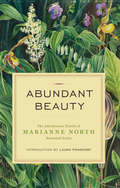
Abundant beauty: the adventurous travels of Marianne North, botanical artist
By Marianne North. 2010
"In 1871, Marianne North, a brilliant artist with a keen interest in botany, set-forth to travel the world on a…
quest to paint indigenous plants in their natural habitat. Encouraged by her friend Charles Darwin, North travelled by boat, train, mule, foot and palanquin to every continent except Antarctica. She circled the globe twice over fifteen years and accumulated an extensive and valuable collection of more than eight hundred paintings, which today comprise the esteemed Marianne North Gallery at the Royal Botanical Gardens at Kew, London. North high-spirited, indefatigable, and brave also kept detailed journals, which were posthumously published in three volumes in the late 1800s. Abundant Beauty collects the most engaging writings from those journals in one edition, including rich descriptions of botanica and delightful accounts of local people and customs from her sometimes dangerous travels. Abundant Beauty is a fascinating and informative read for botanists, gardeners, historians, and armchair travellers." -- WorldCat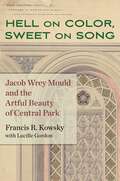
Hell on Color, Sweet on Song: Jacob Wrey Mould and the Artful Beauty of Central Park
By Francis R. Kowsky. 2023
WINNER, VICTORIAN SOCIETY IN AMERICA BOOK AWARDWINNER, 2024 PUBLICATION PRIZE, FRIENDS OF THE UPPER EAST SIDE HISTORIC DISTRICTSReveals new and…
previously unknown biographical material about an important figure in nineteenth-century American architecture and music.Jacob Wrey Mould is not a name that readily comes to mind when we think of New York City architecture. Yet he was one-third of the party responsible for the early development of the city’s Central Park. To this day, his sculptural reliefs, tile work, and structures in the Park enthrall visitors. Mould introduced High Victorian architecture to NYC, his fingerprint most pronounced in his striking and colorful ornamental designs and beautiful embellishments found in the carved decorations and mosaics at the Bethesda Terrace. Resurfacing the forgotten contributions of Mould, Hell on Color, Sweet on Song presents a study of this nineteenth-century American architect and musical genius.Jacob Wrey Mould, whose personal history included a tie to Africa, was born in London in 1825 and trained there as an architect before moving to New York in 1852. The following year, he received the commission to design All Souls Unitarian Church. Nicknamed “the Church of the Holy Zebra,” it was the first building in America to display the mix of colorful materials and medieval Italian inspiration that was characteristic of High Victorian Gothic architecture. In addition to being an architect and designer, Mould was an accomplished musician and prolific translator of opera librettos. Yet anxiety over money and resentment over lack of appreciation of his talents soured Mould’s spirit. Unsystematic, impractical, and immune from maturity, he displayed a singular indifference to the realities of architecture as a commercial enterprise. Despite his personal shortcomings, he influenced the design of some of NYC’s revered landmarks, including Sheepfold, the Metropolitan Museum of Art, the American Museum of Natural History, the City Hall Park fountain, and the Morningside Park promenade. From 1875 to 1879, he worked for Henry Meiggs, the “Yankee Pizarro,” in Lima, Peru.Resting on the foundation of Central Park docent Lucille Gordon’s heroic efforts to raise from obscurity one of the geniuses of American architecture and a significant contributor to the world of music in his time, Hell on Color, Sweet on Song sheds new light on a forgotten genius of American architecture and music.Funding for this book was provided by: Furthermore: a program of the J. M. Kaplan Fund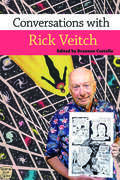
Conversations with Rick Veitch (Conversations with Comic Artists Series)
By Brannon Costello. 2025
From his roots in underground comics to his high-profile runs on mainstream characters, Rick Veitch (b. 1951) has carved out…
a career unlike anyone else’s. Collecting thirteen interviews—including three published here for the first time—Conversations with Rick Veitch offers a wealth of insight not only into the development of Veitch’s graphic innovations and metaphysical explorations, but also into the upheavals and transformations of American comics from the 1970s to today. In acclaimed comics such as The Maximortal, Army@Love, and Can’t Get No, Veitch employs a style that synthesizes Jack Kirby at his most cosmic, the mind-bending graphic sensibility of European innovators such as Jean (Moebius) Giraud and Philippe Druillet, and the brass-tacks realism of classic war cartoonists such as John Severin and Russ Heath. His comics defamiliarize popular genres—especially superheroes, war stories, and science fiction—with his philosophical musings and pointedly satirical political perspective. Yet Veitch’s capacious mind reaches beyond these familiar genres, too, as his long-running autobiographical dream comic Roarin’ Rick’s Rare Bit Fiends attests. Ranging across topics such as his early days at the Joe Kubert School, the controversial end of his Swamp Thing run, his muckraking work as a comics journalist, and his educational comics publishing venture, Eureka Comics, the interviews collected here reveal Veitch to be both a shrewd observer of the pitfalls of the marketplace and an eloquent spokesman for the boundless potential of creativity. A comics maker since childhood and a fierce advocate of creator’s rights and the possibilities of self-publishing, Veitch knows all too well the many persistent obstacles to creating comics that challenge readers instead of condescending to them. Yet Veitch remains optimistic about the potential of comics. According to Veitch, comics “might be the form of the future.” If that’s the case, then his work is a map to that future.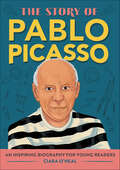
Discover the life of Pablo Picasso—a story about endless imagination and creativity for kids ages 6 to 9Pablo Picasso was…
a famous artist who loved to break the rules and try out new ideas. Before he transformed what people thought about art, he was a young boy who loved to draw and observe the world around him. He mastered classical art styles and then invented new ways of expressing his creativity. This book explores how Picasso went from being a talented boy growing up in Spain to a respected artist who changed the world.Independent reading—This Picasso biography is broken down into short chapters and simple language so kids 6 to 9 can read and learn on their own.Critical thinking—Kids will learn the Who, What, Where, When, Why, and How of Picasso's life, find definitions of new words, discussion questions, and more.A lasting legacy—Find out how Picasso changed the art world and inspired countless others to express themselves through creativity.How will Picasso's imagination and originality inspire you?Discover activists, artists, athletes, and more from across history with the rest of the Story Of series, including famous figures like: Frida Kahlo, Ella Fitzgerald, Maya Angelou, Audrey Hepburn, and Leonardo da Vinci.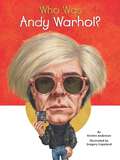
Who was andy warhol? (Who Was?)
By Kirsten Anderson. 2016
Best known for his screen prints of soup cans and movie stars, this shy young boy from Pittsburgh shot to…
fame with his radical ideas of what “art” could be. Working in the aptly named “Factory,” Warhol’s paintings, movies, and eccentric lifestyle blurred the lines between pop culture and art, ushering in the Pop Art movement and, with it, a national obsession. Who Was Andy Warhol? tells the story of an enigmatic man who grew into a cultural icon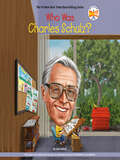
Who was charles schulz? (Who Was?)
By Joan Holub. 2022
Learn more about the cartoonist who created Charlie Brown, Snoopy, and the rest of the lovable Peanuts gang in this…
new addition to the #1 New York Times bestselling series! Charles (otherwise known as Sparky) Schulz always loved drawing from the time he was a young child, and as he grew older, he turned this passion into a phenomenally successful career. His early doodles of his mischievous dog and of a shy boy inspired two of his most familiar and beloved characters, Charlie Brown and Snoopy. Here's the story about Peanuts gang and Charles's life that's sure to excite all readers but especially those who love the classic cartoon series